The cat heard the wheels of a carriage pulling onto the bridge and ran out to meet him.
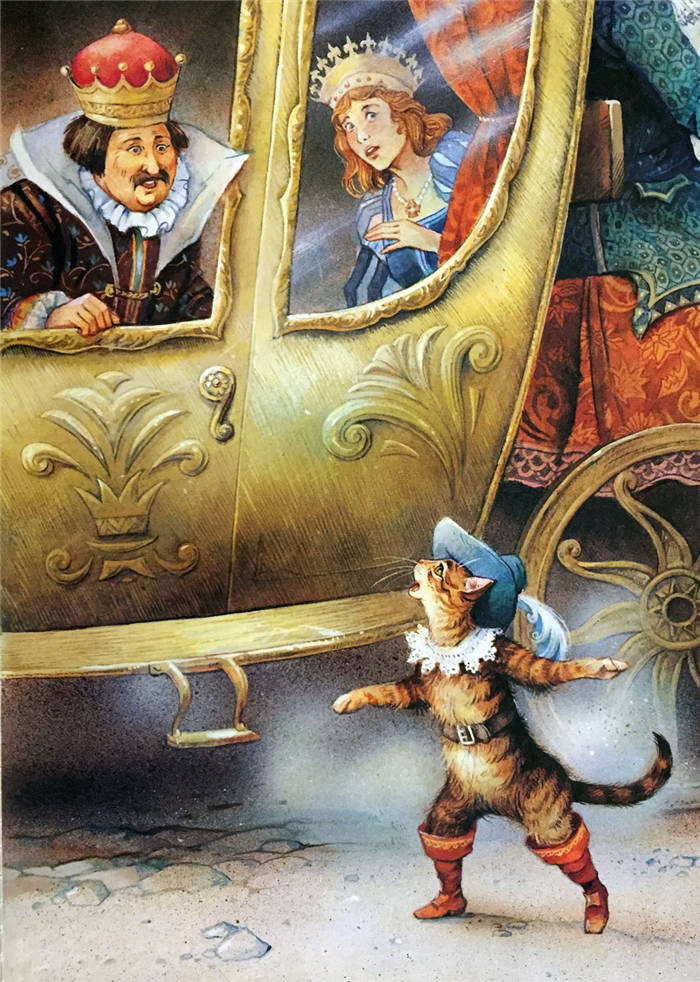
- Where did the Puss in Boots come from?
- The Italian roots of the cat in boots.
- The Puss in Boots – Charles Perrault
- The main characters
- Charles Perrault The Cat in Boots
- The Tale of the Cat in Boots
- Who is the author of The Cat in Boots?
- The Ancient Roots of the Tale of "Puss in Boots.
- What is the moral of the tale "Puss in Boots"?
- A Cat in Boots
Where did the Puss in Boots come from?
Charles Perrault was a great storyteller, though he had no formal schooling. In 1697, under the name Pierre Darmancourt (Perrault's son) comes out his famous collection, The Tales of the Mother Goose. All the tales are reworkings of folk tales. Here are just a few that are known throughout the world to this day:
All of these stories we remember, love and know from childhood. But this article will talk about a mustachioed, striped character whose roots go back to Italy and Spain. The story of the resourceful cat existed long before she wore boots.
The Italian roots of the cat in boots.
As early as the 16th century (a century and a half before Perrault), a certain Gianfrancesco Straparola lived and worked. He was a novelist who composed tales and tall tales, and Straparola is most likely a pseudonym, as it translates as something like "chatterbox" or "braggart.
There, he also described the story of a magic cat (a cat, not a cat) who helped his master, Constancio, marry a princess and receive half a kingdom as a gift.
The cunning cat visited the king and praised her master (the brotherless peasant). She ate the viands from the king's table and hid part of them to cure and fatten her sick master.
Then the cat pulled off a scam with clothes (which were supposedly stolen) and took the king to the castle of an old knight (not an ogre) who had long since left to rescue his wife, but never returned. In the meantime, Constanzio was cured and appeared to the king in all his glory. He was overjoyed to have his daughter marry the "rich" groom, and when he passed away, Constanzio got everything.
The Puss in Boots – Charles Perrault
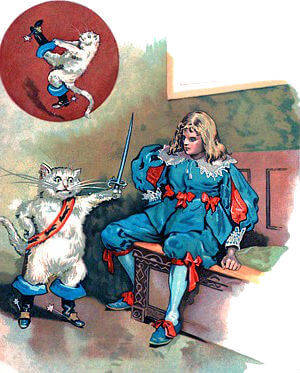
Ш. Perrault The Puss in Boots – the tale of the charming and witty cat who made his poor master a venerable marquis. The Tale of the Cat in Boots can be listened to online, read in full or a short summary for free. The text of the tale is convenient to download in PDF or DOC format and print if you wish.
A brief content Tale of a Puss in Boots: The miller left his sons an inheritance: a mill, a donkey and a cat. The youngest son got the cat, and he was very upset. Seeing his master's sorrow, the cat came up with a cunning plan, according to which his master was the rich Marquis de Carabas, the owner of meadows, forests, and a fine castle. To do this, he had coaxed the mowers and the reapers in advance. And he simply outwitted the huge giant. The king was enchanted by the virtues and wealth of the Marquis de Carabas, as was his daughter. They married, and The Cat became a nobleman.
The main idea of the tale of Puss in Boots is that a clever head and thoughts are worth more than many material possessions. The cat was so nimble and savvy that he made his master a fortune out of nothing and married the king's daughter.
The Tale of the Cat in Boots teaches Friendship, courage, cunning, and dexterity. It teaches you to be witty and nimble, to turn on your charm and chorism to achieve your goals, to try to find a way out of any situation.
The audio fairy tale A Puss in Boots will be of interest to children of all ages. You can listen to it online, or download it to your device in MP3 format for free.
A miller had three sons, and when he died, he left them only a mill, a donkey and a cat.
The brothers divided their father's property between them, without a notary or a judge, who would have swallowed all their meager inheritance.
The eldest got the mill. The middle one got the donkey. And the youngest had to get himself a cat.
The poor man could not take solace in his miserable share of the inheritance for a long time.
The main characters
On the eve of his death, the miller divides his property among his children. The father bequeathed a mill to his eldest son, a donkey to his second son, and a cat to his last son. The last of the miller's children is desperate. The cat asks his new owner to order him boots. Thereafter, the miller's third son's four-legged friend successfully hunts for game. He presents the booty to the monarch on behalf of the Marquis of Carabas.
One day, the King and his heiress go for a ride in a carriage. The cat learns of this and tells his owner to climb into the river to the place he has specified. The cat himself runs towards the king and declares how the Marquis Carabas has been robbed by thieves and is about to die in the river. The King orders that the drowning man be rescued and given an outfit befitting his position. After this, the monarch invites the rescued nobleman to join him on his walk with his daughter.
The cat runs around and warns everyone he meets to tell the monarch that the Marquis Carabas owns everything around him.
Next, the cat rushes to the castle to the real owner of these lands. He was a giant ogre with unique abilities.
The formidable giant courteously accepts the cat, as he had never seen these animals in shoes and did not know that they could speak in a human voice. The cat asks the master of the castle to confirm his ability to turn into a large animal. The ogre transforms into a lion. The cat then expresses doubt that such a giant can turn into a small mouse. The ogre turns into a mouse, which is immediately used by the cat and eats the giant.
Soon the King's carriage arrives at the castle. He is so amazed by the Marquis´ rich possessions and luxurious castle that he proposes marriage to Carabas´ daughter. The miller's son became the sovereign's son-in-law that very day.
Charles Perrault
The Cat in Boots
A miller left his three sons a small inheritance – a mill, a donkey and a cat.
The brothers immediately divided their father's inheritance: the eldest took the mill, the second one took the donkey, and the youngest was given the cat. The younger brother was very sad that he had received such a bad inheritance.
– Brothers can make an honest living if they live together," he said. – But me, when I eat my cat and make mittens out of his skin, I will have to starve to death.
– Don't grieve, master," he said earnestly and seriously, "give me a sack and a pair of boots so that it will be easier to walk in the bushes. Then you will see that you have not got such a bad inheritance as you think.
Master Cat didn't really believe his words. But he remembered his various tricks and thought, "Maybe. Cat might actually be able to do something for me!"
As soon as the Cat got the boots from his master, he deftly put them on. Then he put a sack full of cabbage, threw the sack on his back, and went into the woods, where there were a lot of rabbits.
He came into the woods, lurked behind the bushes and waited for some young, silly rabbit to stick into the sack for cabbage.
No sooner had he hid than he got lucky: a young, trusting rabbit climbed into the bag. The cat quickly rushed to the bag and tightened the ties tightly.
Very proud that the hunt was so successful. The cat went to the palace and asked to be allowed to see the king.
He was led into the king's chambers. Upon entering there. The cat bowed low to the king and said:
– Great King! The Marquis Carabas (as the cat likes to call his master) ordered me to bring you this rabbit as a present.
– Tell your master," replied the king, "that I am very pleased with his gift and thank him.
Another time he hid in a field, among the ears of wheat, and opened a bag of bait.
When two partridges fell into the sack. The cat immediately took the partridges to the king. The king gladly accepted the partridges, too, and ordered him to treat the Cat to wine.
The Tale of the Cat in Boots
The Cat in Boots is Charles Perrault's famous story about the third, youngest son, who received the smaller part of his inheritance. In memory of his father, his son was given an intelligent cat who wears a pair of shoes and speaks human. His master is poor and unimportant, so the enterprising cat wants to win him a stronger position in society. To do this, he tricks the king into believing that his master is, in fact, a powerful lord. At the end of the tale, the third son marries the king's daughter. In this tale, the protagonist, The Cat, veiledly conveys the qualities of the younger son, namely intelligence, courage, and wit. The moral of the story: a man should always rely on his abilities, and importantly, believe in himself and be the creator of his own good fortune.
One miller, dying, left his three sons no other inheritance than a mill, a donkey, and a cat. The division was not long in coming and they did without anyone's help.
– The brothers," he thought, "having agreed among themselves, can honestly earn their own piece of bread, while I, a miserable man, will have to starve to death.
Only suddenly Cat, who heard these speeches, but did not show that he was listening to them, and says in a calm, serious tone:
– Don't grieve, master, but give me a sack and order me a pair of boots so that it doesn't hurt to walk in the bushes, and you will see that you are not as deprived as you think.
Although the owner of the Cat did not rely too much on his promises, but knowing what a master he is at catching mice in various cunning ways, knowing his dexterity, he thought that maybe the Cat would indeed help him in his misfortune.
When the cat got what he asked for, he bravely put on his boots, put the bag around his neck, took the ropes with which the bag was closed, and went into the woods, where a lot of rabbits lived. He put some bran and grass in the bag. Stretching like a dead man, Cat waited for some young rabbit to slip into the bag to nibble on the baits thrown there.
As soon as he lay down he could celebrate his victory: a young rabbit jumped into the sack. The cat immediately tightened the ropes and, happy with his prey, immediately went to the king.
Who is the author of The Cat in Boots?
That's a strange question. Who doesn't know that Charles Perrault. ? Here is the classic edition with Doré's illustrations:
We all remember the amazing story of how, at the end of the seventeenth century, the elderly, venerable theater critic Charles Perrault, after much doubt and hesitation, published a little book of fairy tales. About The Cat in Boots, about Cinderella and Tom Thumb, about Little Red Riding Hood and Bluebeard.
It was no small risk: after all, fairy tales were not considered a genre of literature! And the author had a lot to lose: his literary reputation was solid and well-deserved. So he decided on an innocent forgery: he signed the tales with the name of his eighteen-year-old son. He did not suppose that the entire multi-volume corpus of his near-theatrical works would fade into oblivion – but the "trinket" would immortalize him!
But how authorial were these tales? Perrault himself later admitted that he had only completely composed one: "Riquet's Crest." The rest were "ennobled fruits of the common people's imagination," which he had heard from his nurse.
So can one consider retellings, sometimes very free, belonging to different authors of different times and nations, to be "plagiarized"?
Russian Fairy Tale "Kuzma the Soon Rich" is considered a folk tale. Does it go back to Perrault, or is it just a stray story?
А Zhukovsky Vasily Andreevich played around with the well-known story, adding a good dose of humor to it. And he actually wrote a new fairy tale in resounding verse:
The Ancient Roots of the Tale of "Puss in Boots.
"Puss in Boots" is one of Charles Perrault's most famous fairy tales. Four centuries later, children still love the tale of the dodgy cat who defeats the ogre and makes the miller's son the Marquis de Carabas.
However, the plot of the tale is much older. The plot, in which a poor man, with the help of a helper animal, marries the daughter of a king, vizier, khan, or other dignitary, is found in different parts of the world.
The content of the tale varies, of course, depending on the everyday life and traditions of the people, but the plot retains its structure through the ages. Simply put, if I tell you a Russian tale about Kuzma Skorobogatov or a Zanzibar tale about a miraculous gazelle, anyone will say, "That's the Cat in Boots.
Science has two explanations for this phenomenon. The first is the theory of borrowing.. Scientists have paid attention to the commonality of Western and Eastern fairy tales and made the assumption that they all originated in one place (for example, in India) or from several foci, from where they spread all over the world.
Another theory is anthropological or self-generated storytelling theory. Proponents of this view believe that all "coincidences" arose because of the commonality of mental laws, patterns of creativity, everyday life, and stages of development of this or that society.
Regardless of which side is closer to the truth, the proponents of both theories have contributed greatly to the study of the commonality of different cultures.
For a long time, the plot of the tale "Puss in Boots" has existed among different peoples in the oral tradition. The main character is the animal helper: the cat is the most common in Western Europe, in Slavs, Armenians, and Mongols – the fox, in India in some versions of the tale a jackal helps, and in Africa, the gazelle acts as a helper.
The basic peripeteia is preserved in different peoples. The poor man rescues the animal or agrees not to kill it (e.g., when it steals his chickens).. For this, the animal becomes a helper and goes out to woo the local ruler, presenting his master as a rich and noble man who was robbed and beaten on the way by robbers. So the helper arranges the wedding. When the time comes to show his wife and her father the property, the animal goes in search of a home to match its new status. More often than not, the helper has to fight for a new castle (or other dwelling) with a monster (or sorcerer, as the Grimm brothers have it). Less often, the helper manages to pull off one trick without bloodshed.
What is the moral of the tale "Puss in Boots"?
"The Cat in Boots" is a European literary tale in which the furry protagonist uses trickery and deceit to gain power and wealth for his beggarly master. The story originally served as entertainment for adults, not children.
An outline of this plot first appears in the 4th century AD in the Panchatantra, a collection of Indian animal fables. There a cunning cat tried to pull a similar scam, but failed.
The next time the story of the stray cat appeared in Giovanni Straparola's collection of short stories, The Pleasant Nights (1550-1553). The tale was called Lucky Constantino. The only thing left in the story from the Hindus is the origin of the protagonist. The poor young man in this tale was the son of a Bohemian gypsy woman. In this version, some details appeared in the story, which later disappeared. For example, the cat was an enchanted fairy. Instead of an abstract ogre, Straparola had a wealthy castle owner who died in an accident. And more of the details: the protagonist eventually becomes king of Bohemia. A version of this tale has gone from mouth to mouth for a long time, so it is unclear whether Straparola invented it or just wrote it down.
In 1634, another Italian, Giambattista Basile, published his own version of the story in a collection of Fairy Tales. It, too, had special details. The poor young man's name was Caluso. He was so grateful to the cat for his services that he promised, when the time came, to bury his favorite in a golden coffin. Three days later, the cat decided to check on his master and pretended to be dead. Caluso, learning of the loss, told his wife to take the cat by the paws and throw it out the window. The cat was extremely indignant and furious and immediately left the young man for good.
The collection "Tales of Mother Goose" by Charles Perrault was published in 1697 and instantly became widely known. Most of the tales came here from a collection by Giambatista Basile. In doing so, Perrault purged the story of too much literary detail that gave nothing to the story, but added something of his own: for the first time, the cat wore boots. At the same time, nowhere in the story is it explained why he needed them. Nevertheless, this detail stuck in the future.
A Cat in Boots
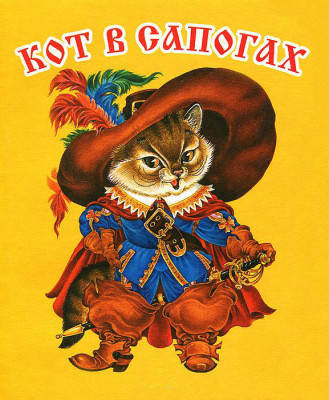
The Puss in Boots is a work by Charles Perrault, which is familiar to almost everyone on the planet. The tale is about an unenviable inheritance, which was received by one of the miller's sons. After his death, his father left him a cat and some coins. But the cat was not so simple: he asked to buy him boots with the last of the young man's money. After that, he did everything he could to get his master into the marquises, and also to marry the king's daughter. The tale tells us that sometimes the loyalty of friends and wit are more valuable than gold.
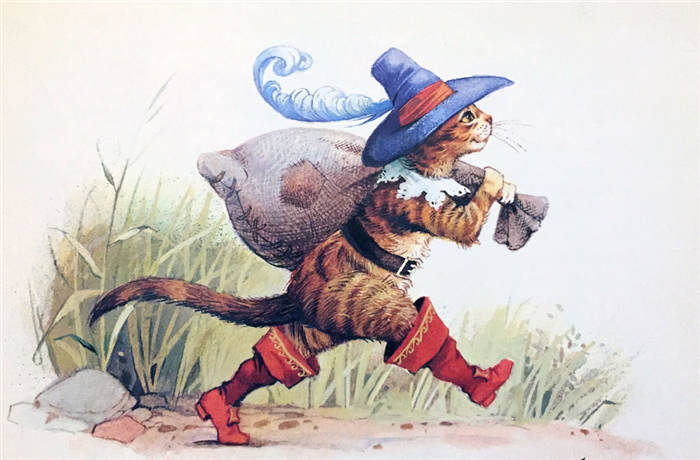
One miller, dying, left his three sons a mill, a donkey and a cat. The brothers divided the inheritance themselves and did not go to court – the greedy judges would take away the last. The eldest got the mill, the youngest the donkey, and the youngest the cat. The younger brother could not take solace in the fact that he had received a miserable inheritance.
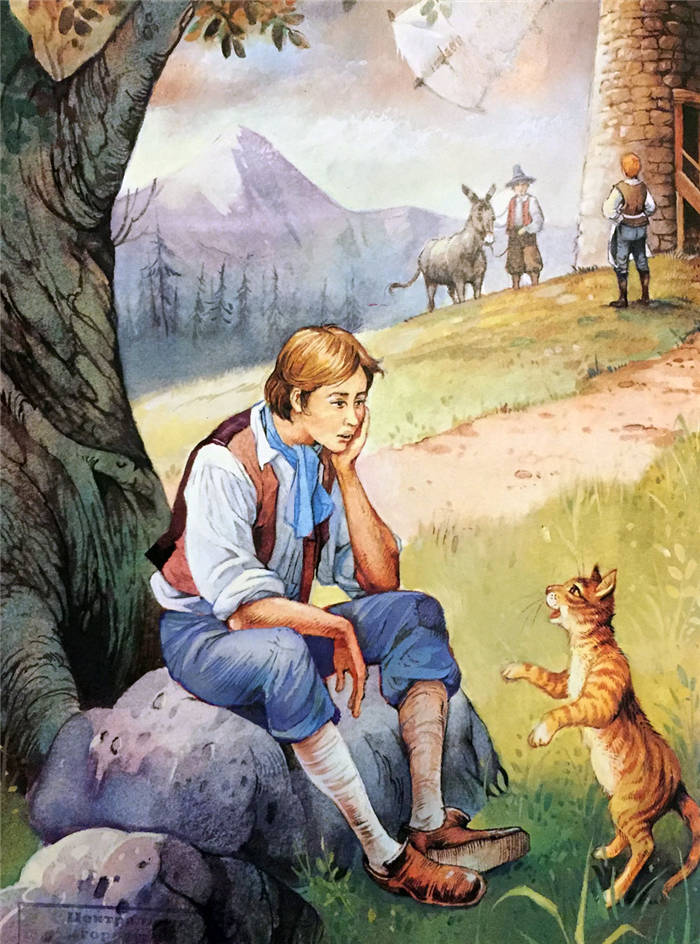
– Good for the brothers," he said. – They will live together and earn their bread honestly. And me? Well, I'll eat a cat, sew mittens from its skin. And then what? Starve to death?
– Stop grieving. Give me a sack, and order a pair of boots to make it easier to walk through the woods and fields, and you will see that you are not so offended as you now think.
The owner did as the cat told him to do. And as soon as the cat got everything he needed, he quickly got his shoes on, threw the bag over his shoulder, and went to the nearest reserved forest.
From the bag, which contained bran and harekraut, the cat set a cunning trap, and himself, stretched out on the grass and pretended to be dead, began to wait for prey. He did not have to wait long: some silly young rabbit immediately jumped into the bag. The cat, without thinking long, tightened the bag and went to the royal palace. When the cat was led into the king's chambers, he bowed respectfully to the king and said:






